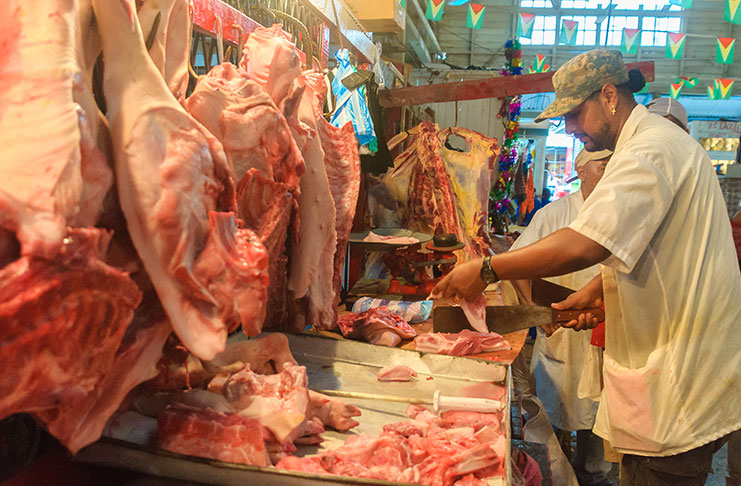Guyana, through its efforts at driving the Caribbean’s food security agenda, is hoping to increase the production of livestock and mutton.
And the country believes that Brazil can be a key partner.
“We are working with Brazil to sign an agreement to enhance our livestock breed and expand the production of mutton and mutton products to satisfy regional demands,” President Ali told investors during a Guyana investment seminar held at the Carlton House in the United Kingdom (UK) on Tuesday.
This meat market, the President posited, is about US $55 million (or GY $11.5 billion) annually.
The News Room also understands that the Caribbean Community (CARICOM) spent about US$48 million (or GY$10 billion) importing about 7,900 tonnes of mutton or lamb in 2019.
During the years before that, US$43.6 million was spent in 2018, US$47.3 million in 2017 and US$36 million in 2016.
And plans to expand local production and cut import costs are among those opportunities the government is preparing the local economy to exploit, according to the Head of State.
Meanwhile, Dr. Ali also talked up the production of hemp in Guyana.
Hemp is used to make a variety of commercial and industrial products, including rope, textiles, clothing, shoes, food, paper, bioplastics, insulation, and biofuel. It also has many medicinal purposes.
Because of these numerous uses for the product, Dr. Ali acknowledged that farmers may seek to use more lands, including those set aside for increased food production, to produce hemp.
Forthcoming legislation that is expected to green-light the production and use of hemp in Guyana, however, is expected to identify the specific areas where hemp shall be grown.
“It will not take out of production any of the land used currently or required to meet the output of the food system,” the President said.
Already though, Vice President Dr. Bharrat Jagdeo announced that farmers from Region Six (East Berbice- Corentyne) and Region 10 (Upper Demerara- Berbice) will be targeted for this new industry.






